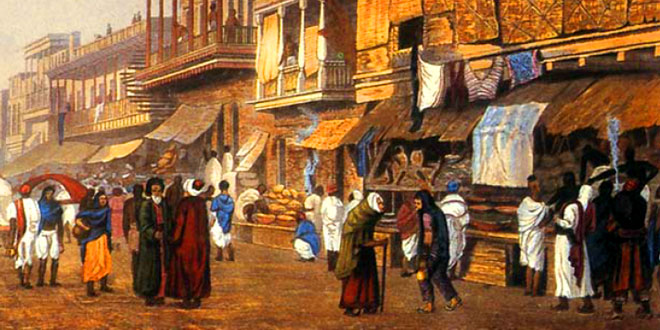Question: Name the centres of Rajasthani style painting. When did this style flourished?
Answer: The main centres of Rajasthani style were Mewar, Jodhpur, Bundi, Bikaner, Kota and Krishangarh. The style flourished from the late 14th century to 18th century. The painters painted religious and mythological scenes, especially stories of Lord Krishna and Radha, hunting and nature scenes and interesting episodes from Hindu epics.
Question: From Which word was ‘Kathak’ derived? Who were the Kathakars?
Answer: In North India, Kathak evolved as a distinct dance form. The term was derived from the word “Katha” which means story. The Kathakars were a caste of storytellers attached to temples. Using gestures and songs, they told stories in praise of God. Thus, Kathak was initially a devotional art form. Under Mughals Kathak became a form of entertainment. It began to be performed in the court of kings. The costumes and the style changed. Two schools or gharanas developed – the Jaipur Gharana and the Lucknow gharana. Nawab Wajid Ali Shah, the last nawab of Awadh, was a great patron of this dance form.
Question: Write distinctive features of temples of Bengal. or What are the architectural features of the temples of Bengal.
Answer: A large number of temples were constructed in Bengal.
- Most were modest brick and terracotta structures.
- They were generally four-roofed structures with four triangular roofs, moving up to converge at a point. Bishnupur has many such temples.
- The outer walls of these temples are covered with terracotta tiles that depict scenes from the epics.
- The temples were usually built on a square platform.
Question: Describe the development of literature in South India in Early Medieval Period.
Answer: Tamil, Telugu and Kannada prospered under Chola rule. Administrative records were maintained in these languages. Malayalam was partonized bt the Cheras.
- Literary activity prospered under Cholas. Many religious and secular works were translated during their reign.
- Kamban translated the Ramayana into Tamil. Nannayya and Tikkana translated the Mahabharata into Telugu.
- Kannada was enriched by the writting of Pampa, Ponna and Ranna, popularly known as ‘the three jewels of Kannada literature’.
- The works of the Tamil saints enriched Tamil.
Question: How did Akbar encourage Persian Literature?
Answer: Persian was the official language of the empire. All administrative records and proceedings of the royal court were maintained in Persian.
- Akbar encouraged Persian literature. He had the Ramayana and the Mahabharata translated into Persian.
- Books in Arabic and Turkish were also translated into Persian. Many original works in Persian were also written.
- Abdul Fazl wrote a biography of Akbar called the Akbarnama. A part of it is called Ain-i-Akbari.
 Class Notes NCERT Solutions for CBSE Students
Class Notes NCERT Solutions for CBSE Students



Very bad I wanted explanation for this chapter